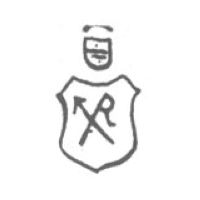
Image 011234-02-01
First mark used by "Unger & Schilde".
This page is dedicated to Tammy Wilson and her mother, the granddaughter of Mr. Bernhard. I would also like to thank Mr. Heiko Haine of the Eisfeld museum for helping out with the marks used by the company.
During the middle of the 18th century the family von Brandenstein was represented by the lord of the manor Christian Ferdinand von Brandenstein. While inspecting his estate in Roschütz he discovered that his family was literally sitting on a very good kaolin deposit. At first the family sold the material to the Steingutfabrik Leibe & Hofmann, a factory located in Untermhaus (which today is also a part of Gera). The von Brandenstein family finally decided to use the deposits for themselves and founded their own factory in 1811 simply by using their large manor and surrounding buildings and adapting them for this purpose.
As the von Brandenstein family had no specialists at hand the product range was restricted to very basic items. Even during the production of these basic items the family encountered mayor technical problems and therefore went through a lot of experimenting which eventually ruined the whole family, forcing them to sell the factory. Various other owners followed of which nobody kept the factory for long, even though the factory was eventually able to produce tableware in the 1870's which was comparable with products from facilities located in Eisenberg. In 1882 the factory was finally sold to the businessman Bernhard Schilde and his partner Karl Unger who was a modelling artist and had just left the Porzellanfabrik Unger, Schneider & Cie. from Gräfenthal (but still remained partner until 1885).
The company of Unger & Schilde also brought specialists from the towns of Gräfenthal and Meuselbach with them, eventually drastically increasing the quality of the products. Based on the knowledge of the new workers the product range now included basic commodities, vases and ornamental plates. Everything started to work out fine until a huge fire broke out during 1886 that nearly totally destroyed the whole factory. But Unger & Schilde were not businessmen who gave up easily and the factory was instantly rebuilt, including every technical improvement that was available at that time. During the years that followed the blaze, the quality and quantity of products quickly improved and by the year 1900 the factory had a workforce of 200 people, not including the children working at home.
As a side note it should be mentioned that the children had to stick the handles on to the raw pieces of the coffee or tea sets and were paid mere 6 Pfennig for 100 perfectly fitting handles. Many of the Roschütz town people worked at the factory, but the payment they received was mostly not enough to support a family. Most people had two or even three jobs at a time, resulting in totally overtired workers which had to go through monotone work processes again and again, week for week, resulting in various accidents. The life of a low wages worker was comparable with other families during the period of industrial revolution in England.
Around 1913 the factory employed 300 workers but little is known of the following years even if it seems that Karl Unger died around 1920 and Bernhard Schilde continued on his own until he retired. For the year 1930 the records show a number of 250 employees; only 220 were registered for 1937. In 1943 the factory was taken over by Ernst Schilde (possibly Bernhard's son) who lived directly next door to the factory with his wife and their granddaughter, who often played around the factory. No further events or changes are recorded until the founding of the German Democratic Republic, an event that equally disturbed many families and industrials. Opposing to the political front against private industrials and under additional pressure from the now nearly allmighty state machinery, Ernst Schilde decided to flee from East Germany in 1952.
It was perfect timing as the warrants for the takeover of the factory had already been signed and the factory was nationalized in 1953 and renamed to VEB Porzellanwerk Roschütz. Only minor alterations were made to the factory structure from then on. This seemed to change during 1968 when it was decided that the factory should be integrated into one of the largest combines for porcelain production, the Porzellankombinat Kahla.
After integration into the Kahla group, large parts of the factory were modernized during the first few years. But the efforts were stopped during 1975 as international sales of items made in the German Democratic republic were slowly declining and at the same time the logistics behind the different combines and facilities had reached a point that was short to breakdown. The Kahla combine, actually a favourite of the state, came under pressure because it could not achieve its planned target and various facilities were closed down during the next years or totally neglected and degraded to factories for cheap products as it was the case in Roschütz.
After Germany reunification in 1990 the factory was closed because the machinery and installations were way too old to be of further use and a modernization was impossible. But the 'Porzelline' (as the factory was called by the townsfolk) was not demolished. Today the location is occupied by the Vermietungsgesellschaft Gewerbehof Roschütz, a company which owns and rents out buildings and facilities in the industrial area around Roschütz.
Unger & Schilde also owned the trademark 'Ibis' which was introduced around 1905; items from this series are mostly found marked with the round 'Altenburg Saxe' mark including the word 'Ibis' as shown in the marks section below; the trademark 'Ibis' was used until around 1925 while the basic round 'Altenburg Saxe' was used until around 1935.

Image 011234-02-01
First mark used by "Unger & Schilde".
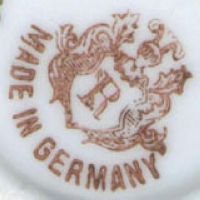
Image 011234-02-02
Used between 1896 and 1968 shown with "Made in Germany", red-brown version.
(Picture: Tombie)
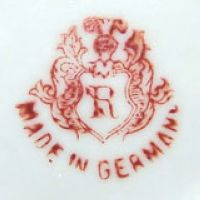
Image 011234-02-03
Used between 1896 and 1968, here a red version.
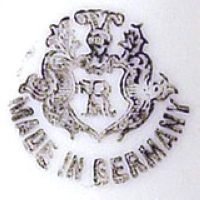
Image 011234-02-04
Used between 1896 and 1968, here a black version.
(Picture: Charles Clark)
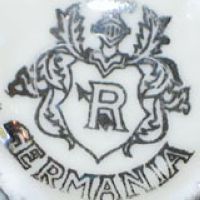
Image 011234-02-05
Post-war version of the previously used mark, here shown with "Germania", note the clearer appearance.
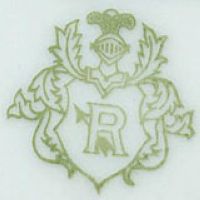
Image 011234-02-06
Like the previously shown mark, later versions were kept a little simpler.
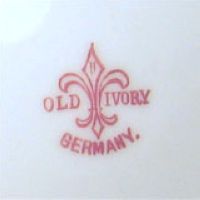
Image 011234-02-07
No date known, export mark for the "Old Ivory" series.
(Picture: usc103)
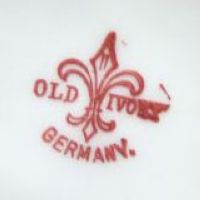
Image 011234-02-08
No date known, export mark for the "Old Ivory" series.
(Picture: usc103)
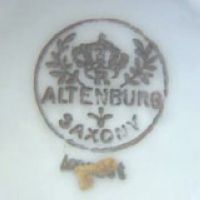
Image 011234-02-09
Used from 1906 until around 1935, registered at the RWZR under №·90·622 on September 7th 1906.
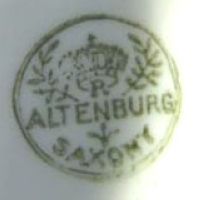
Image 011234-02-10
Used from 1906 until around 1935, green version. Note the "R" for Roschütz above "Altenburg".
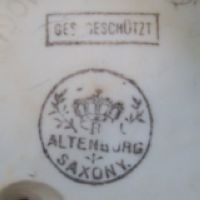
Image 011234-02-11
Used from 1906 until around 1935, green version. Same as before but with addtional GES. GESCHÜTZT stamp.
(Picture: Frank Durot)
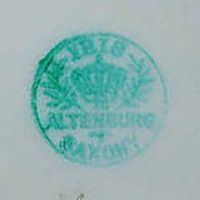
Image 011234-02-12
Used from 1906 onwards until 1925, basically the same as before but with the "Ibis" trade name included.
(Picture: Lisa London)
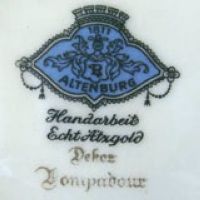
Image 011234-02-13
No date known, shows the founding year "1811" above a kind of compressed Roschütz mark above "Altenburg".
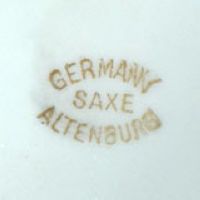
Image 011234-02-14
No date known, export mark "Germany" over "Saxe" over "Altenburg", often falsely claimed to be a Reinhold Schlegelmilch mark.
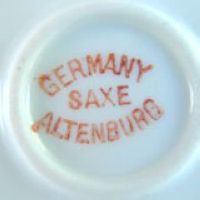
Image 011234-02-15
No date known, same export mark as before.
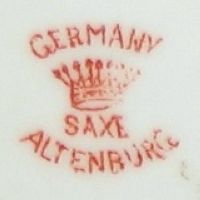
Image 011234-02-16
Used around 1906. Basic "Germany" over crown above "Saxe" and "Altenburg".
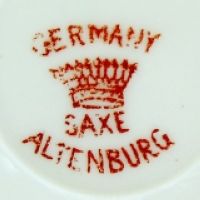
Image 011234-02-17
Used around 1906. Basic "Germany" over crown above "Saxe" and "Altenburg", here a darked version.
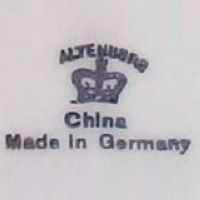
Image 011234-02-18
Used between 1906 and around 1935. "Altenburg" over crown above "China", here with "Made in Germany" addition.
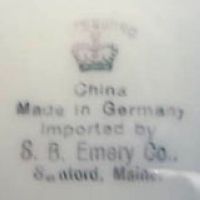
Image 011234-02-19
Used between 1906 and around 1935. Same as before but with complete importer addition.
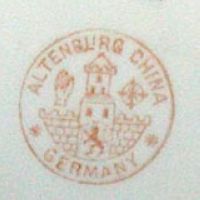
Image 011234-02-20
No date known, export mark "Altenburg China" and "Germany".
(Picture: Mary Streeter)
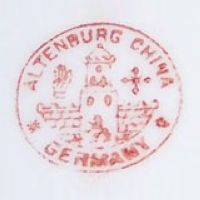
Image 011234-02-21
No date known, export mark "Altenburg China" and "Germany".
(Picture: Fran Kerbs)
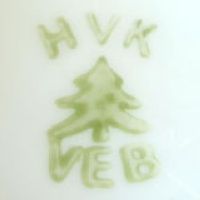
Image 011234-03-01
Used after 1953.
(Picture: Christiane Fischer)
© 2004-2025 C.S.Marshall, all rights reserved